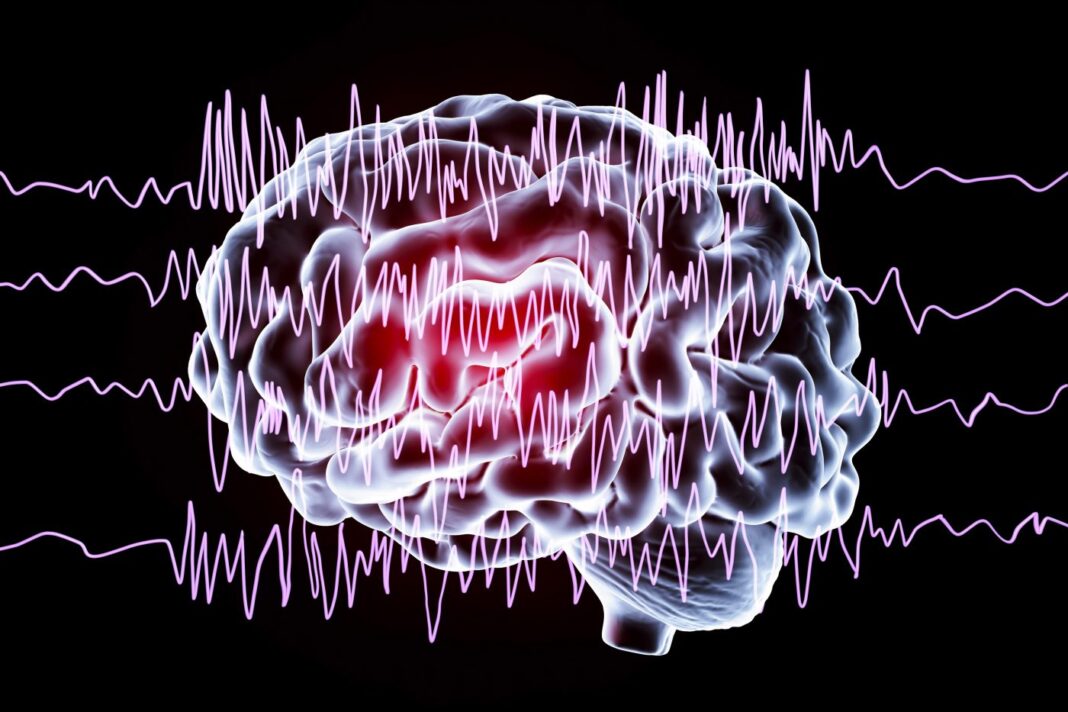Although brain imaging is performed on head-fixed mice, recording neural activity in freely behaving mice has remained a challenge. To address this, researchers report the development of a unique head-mounted mini-microscope device that allows them to image complex brain functions of freely moving mice in real time over a period of more than 300 days.
The device, known as the mini-MScope, offers an important new tool for studying how neural activity from multiple regions of the cortex contribute to behavior, cognition, and perception. The groundbreaking study provides new insight into fundamental research that could improve human brain conditions such as concussions, autism, and Alzheimer’s and Parkinson’s diseases, as well as better understanding the brain’s role in addiction.
The mini-MScope was introduced in Nature Methods in the article, “Miniaturized head-mounted microscope for whole-cortex mesoscale imaging in freely behaving mice.”
It has been difficult, historically, to study activity from multiple cortical regions at once. For mice, even the simple task of moving a single whisker in response to a stimulus involves processing information in several cortical areas. Mice are often used to study the brain because they have many of the same brain structures and connectivity as humans.
“This device enables us to image most of the mouse’s brain during free and unrestrained behaviors, whereas previous mesoscale imaging was usually done in immobile mice using devices like the MRI or two photon microscopes,” said Suhasa Kodandaramaiah, PhD, assistant professor of mechanical engineering in the College of Science and Engineering at the University of Minnesota. “This new device allows us to understand how different areas of the brain interact during complex behaviors where multiple areas of the brain are working together simultaneously. This opens up research into understanding how connectivity changes in diseased states, traumatic brain injury or addiction.”
Researchers at the University of Minnesota College of Science and Engineering used a unique mini-microscope device to image complex brain activity of mice that show multiple areas of the brain interacting. This colorized imaging shows the mouse’s brain activity during stimulation of the left eye. [Kodandaramaiah Lab, University of Minnesota]
The new mini-MScope is a fluorescence microscope that can image an area about 10 mm by 12 mm and weighs about 3 g. This allows holistic imaging of much of the mouse brain surface. The device is used for calcium imaging, a technique commonly used to monitor the electrical activity of the brain. The device mounted on the mouse’s head captures images at near cellular level, making it possible to study connections between regions across the cortex.
The researchers created the miniaturized microscope using LEDs for illumination, miniature lenses for focusing, and a complementary metal-oxide-semiconductor (CMOS) for capturing images. It includes interlocking magnets that let it be easily affixed to structurally realistic 3D-printed transparent polymer skulls, known as See-Shells, that the researchers developed in previous studies. When implanted into mice, the See-Shells create a window through which long-term microscopy can be performed. The new microscope can capture the brain activity of mice for almost a year.
“Our team is creating a suite of tools that will enable us to access and interface with large parts of the cortex at high spatial and temporal resolution,” said Mathew Rynes, a University of Minnesota biomedical engineering PhD candidate who co-led the study. “This study shows that the mini-MScope can be used to study functional connectivity in freely behaving mice, making it an important contribution to this toolkit,” Rynes added.
The researchers demonstrated the mini-MScope by using it to image mouse brain activity in response to a visual stimulus to the eye, a vibrational stimulus to the hindlimb, and a somatosensory stimulus presented to the whisker. They also created functional connectivity maps of the brain as a mouse wearing the head-mounted microscope interacted with another mouse. They saw that intracortical connectivity increased when the mouse engaged in social behaviors with the other mouse.
“To image the brain in freely behaving mice, the device had to be lightweight enough to be supported and carried by the mice,” said Daniel Surinach, a recent University of Minnesota mechanical engineering master’s degree graduate who also co-led the study. “Within this small range, we also needed to optimize optics, electrical and imaging hardware resolution, focusing, illumination designs to provide light to the brain for imaging, and other elements to get clear images of the mouse brain during natural and vigorous behaviors. We ended up designing and testing more than 175 unique prototypes to get the finalized device working!”
The researchers are now using the mini-MScope to investigate how cortical connectivity changes in a variety of behavioral paradigms, such as exploring a new space. They are also working with collaborators who are using the mini-MScope to study how cortical activity is altered when mice learn difficult motor tasks.
“This device allows us to study the brain in ways we could have never done before,” said Kodandaramaiah. “For example, we can image the mouse’s brain activity as it ebbs and flows during natural movement within its space, as it goes to sleep, and when it wakes up. This provides a lot of valuable information that will help us better understand the brain to help people with disease or injury to improve their lives.”
The researchers said the next steps are to improve the resolution of the imaging and study the brain at even finer detail down to examining individual neurons.




